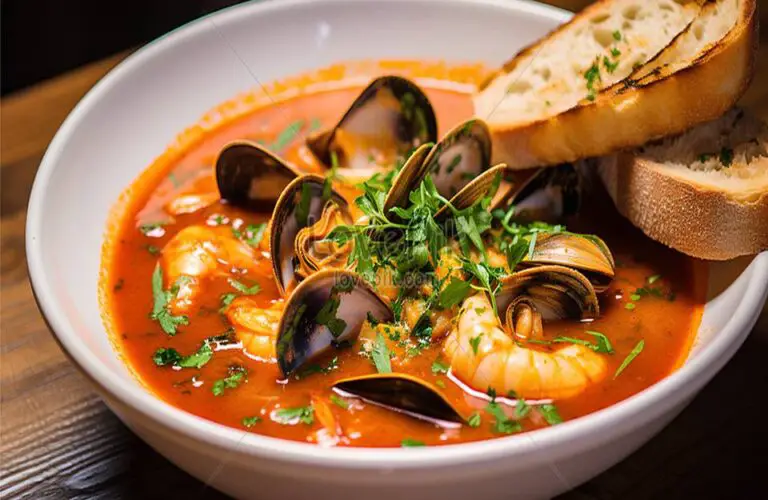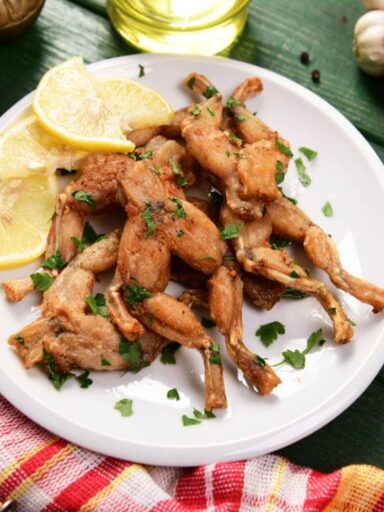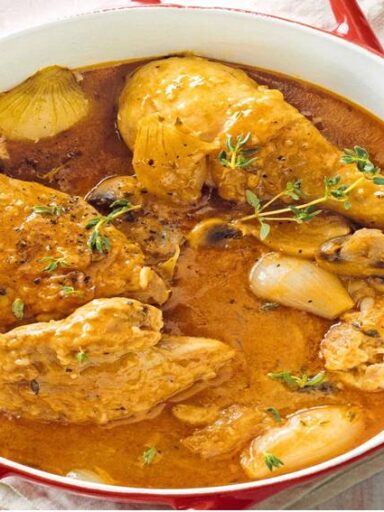Traditional Fish Stew From France
Traditional French fish stew or bouillabaisse originated in the French port city of Marseille. It is a flavourful dish that combines different types of fish and seafood with a variety of vegetables and spices. One of the defining features of bouillabaisse is its rich, saffron-infused broth.
Served With a Side of Crusty Bread
Bouillabaisse is a traditional French fish stew. People often serve it with crusty bread on the side. The bread soaks up the rich and flavourful broth. This dish works well for special occasions. It also makes a great choice for dinner parties. Bouillabaisse is both impressive and delicious.
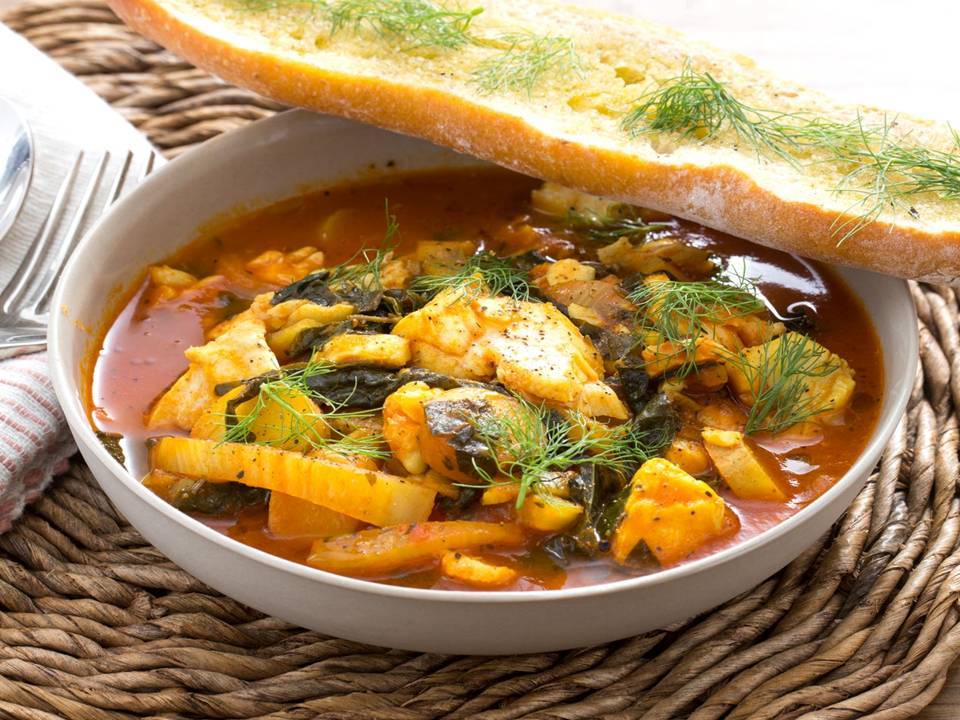
A Classic Flavourful and Hearty Fish Dish
In summary, bouillabaisse is a traditional French fish stew. It is a classic dish that is both flavourful and hearty. The rich broth pairs well with a variety of fish and seafood. This makes it perfect for seafood lovers. It also suits anyone craving a warm, satisfying meal.
How to Make the Bouillabaisse Fish Stew
Ingredients:
1 leek, green top left whole, white finely sliced
Small bunch fresh thyme
3 bay leaves
Bunch parsley, stalks whole, leaves roughly chopped
2 strips of orange peel
1 mild red chilli
4 tbsp olive oil
2 onions, chopped
1 leek
1 fennel, fronds picked and reserved, fennel chopped
4 garlic cloves, minced
1 tbsp tomato purée
1 star anise
2 tbsp Pernod, optional, if you have it
4 large, ripe tomatoes, chopped
large pinch (⅓ tsp) saffron strands
1 ½l fish stock
100g potato, one peeled piece
1kg of filleted mixed Mediterranean fish, each fillet cut into large chunks. (We used a mix of red and grey mullet, monkfish, John Dory and gurnard)
300g mussels, optional
For the rouille:
2 garlic cloves
1 small chunk of red chilli (optional)
Small pinch saffron
1 piece of potato, cooked in the broth, (see above)
1 egg yolk
100ml olive oil
1 tbsp lemon juice
For the croutons
½ baguette, thinly sliced
1 tbsp olive oil
Method:
Step 1: Croutons
Preheat the oven to 200°C (180°C fan/gas 6). Arrange bread slices in a single layer on a baking tray. Drizzle with olive oil and bake for 15 minutes until golden and crisp. Cool and store in an airtight container. You can prepare these a day in advance.
Step 2: Herb Bundle
Wrap thyme, bay leaves, parsley stalks, orange peel, and a dried chilli in a strip of leek’s green top. Tie it with kitchen string to form a bundle. Set aside.
Step 3: Broth Base
Heat olive oil in a large casserole or stock pot. Add chopped onion, sliced leek, and fennel. Cook for 10 minutes until soft. Stir in garlic and cook for 2 more minutes. Add the herb bundle, tomato purée, star anise, Pernod (if using), chopped tomatoes, and saffron. Stir briefly, then pour in the fish stock. Season with salt and pepper. Add one peeled potato and simmer for 30 minutes. Once the potato softens completely, remove and reserve it for the rouille.
Step 4: Rouille
Crush garlic, chilli, and saffron with salt using a mortar and pestle. Mash in the cooked potato. Whisk in the egg yolk and slowly drizzle in olive oil to form a thick, mayonnaise-like sauce. Stir in lemon juice and set aside.
Step 5: Soup & Fish
For a rustic stew, poach the fish and mussels directly in the broth. For a refined version, remove the herb bundle and star anise, blend and strain the soup. Bring to a simmer. Add firm fish like monkfish first, followed by others. Add mussels last and cook until they open.
Step 6: Serve
Arrange fish on a platter with some broth and parsley. Serve with croutons, rouille, and the rest of the broth.
Recommended Wine for Bouillabaisse French Fish Stew
Bouillabaisse, the traditional Provençal fish stew, is known for its complex flavours derived from a rich medley of fish, shellfish, aromatic herbs, saffron, and a touch of tomato. Choosing a wine to complement this dish involves selecting one that enhances its delicate yet flavourful profile without overpowering it.
White Wines

Provençal Rosé
Origin: Provence, France
Why: This local favourite has bright acidity and subtle fruit notes that balance the stew’s saffron and fennel flavours.
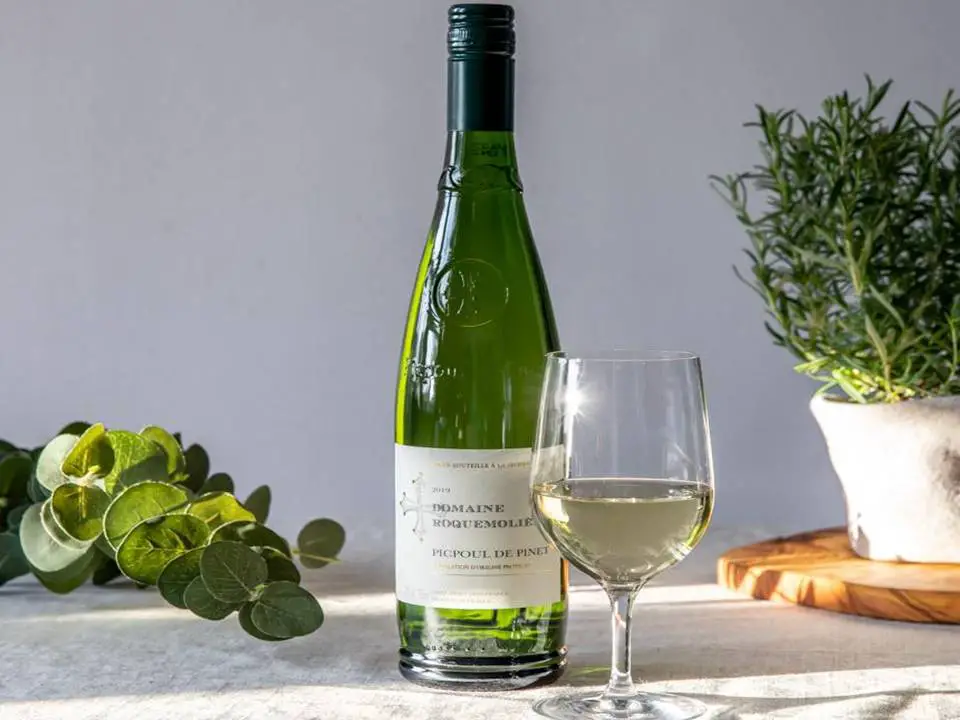
Picpoul de Pinet
Origin: Côtes de Provence or Languedoc
Why: White wines from the region, such as Picpoul de Pinet, have crispness and minerality that mirror the maritime essence of bouillabaisse.

Côtes du Rhône Blanc
Origin: Rhône Valley
Why: A blend of Marsanne, Roussanne, or Viognier provides body, floral notes, and complexity to match the richness of the broth.
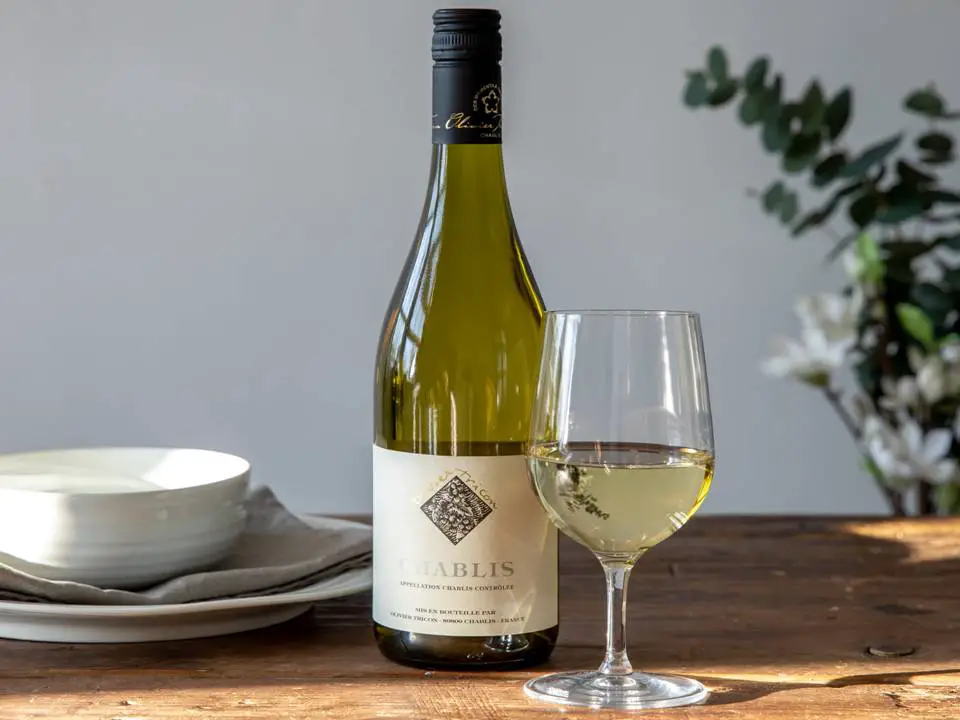
Chablis (Unoaked Chardonnay)
Origin: Burgundy, France
Why: Its clean, mineral-driven profile complements the stew’s briny character without overwhelming it.
Sparkling Wines

Champagne Blanc de Blancs
Origin: France
Why: A sparkling wine with fine bubbles cleanses the palate, enhancing the stew’s vibrant flavours.
Tips for Serving
Serve white and rosé wines chilled but not too cold (around 10-12°C / 50-54°F) to allow their aromas to shine.
If you prefer red wine, slightly chill it to around 13-16°C (55-60°F).
These wine pairings will beautifully complement the complexity and elegance of a classic bouillabaisse.

